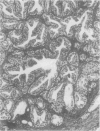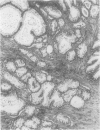Abstract
One hundred prostates from 20 to 40 year old men obtained at necropsy were completely sectioned and studied microscopically. Atypical hyperplasia was found in 10 (20%) of 20-29 year old men and in 12 (24%) of 30-40 year old men. The prostates with atypical hyperplasia had similar weights as those without, and the atypical hyperplasia was most common in the lateral lobes of the prostate and near the apex. The atypical hyperplasias were (i) usually mild in degree rather than moderate or severe; (ii) almost equally divided between circumscribed and "infiltrating" lesions; (iii) usually occurred as multiple foci within the same prostate rather than as a single focus of atypical hyperplasia; and (iv) were not associated with inflammation. The finding that atypical hyperplasia is common in men between the ages of 20 and 40 years may be helpful in increasing the understanding of the histopathology of the prostate.
Full text
PDF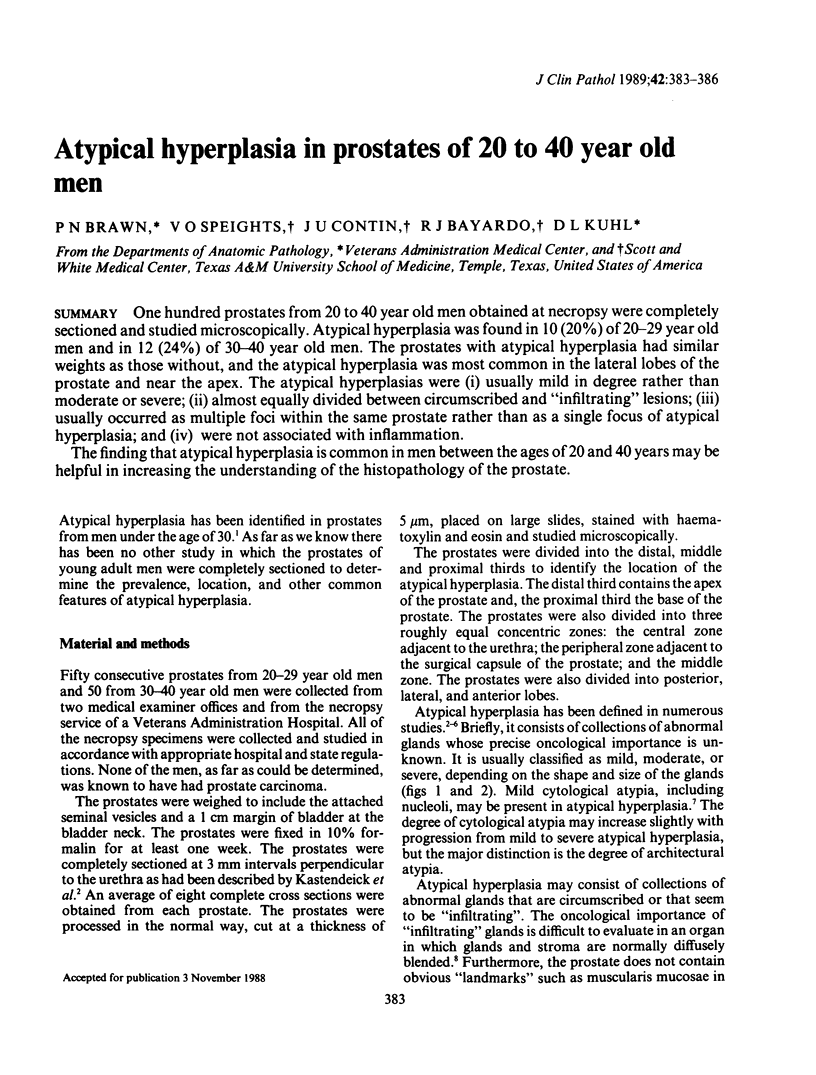
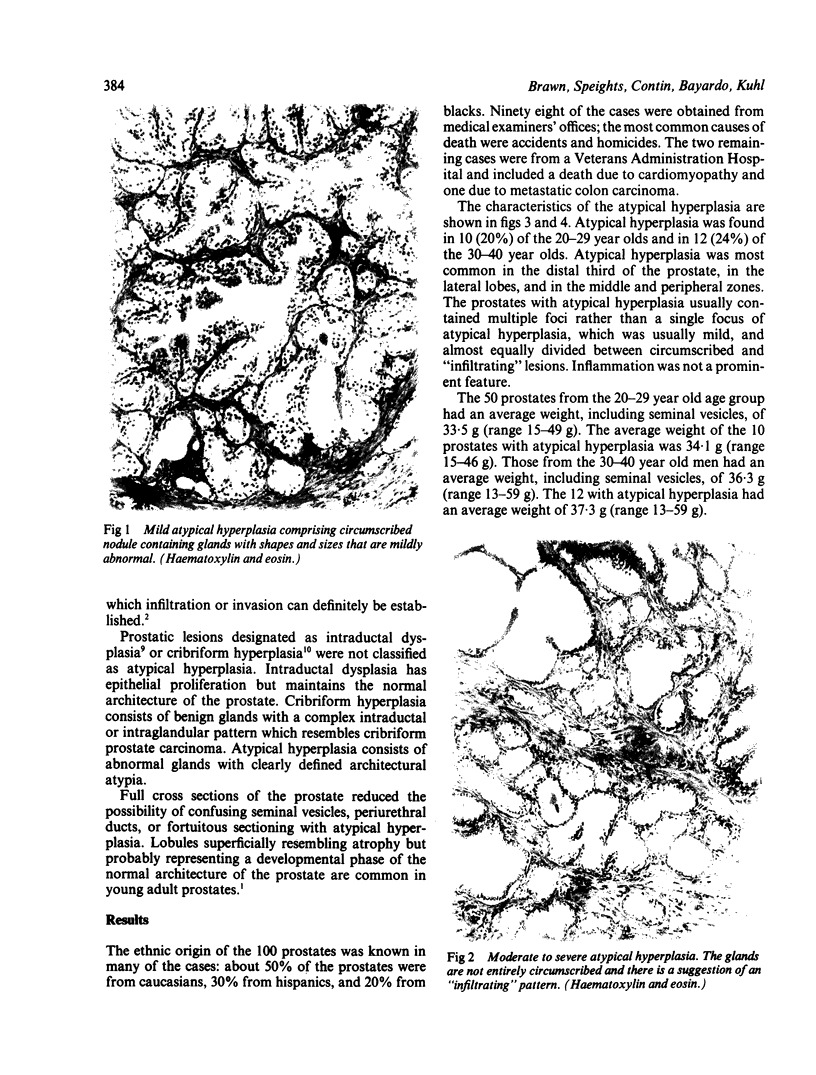
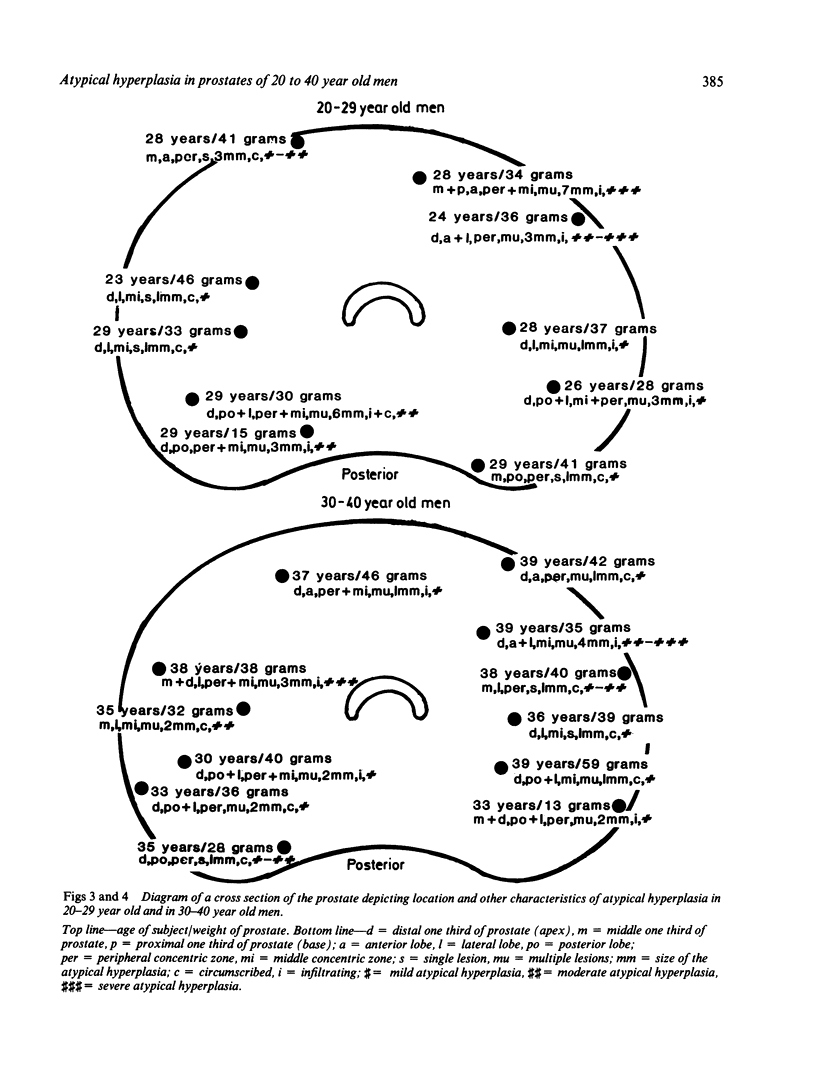
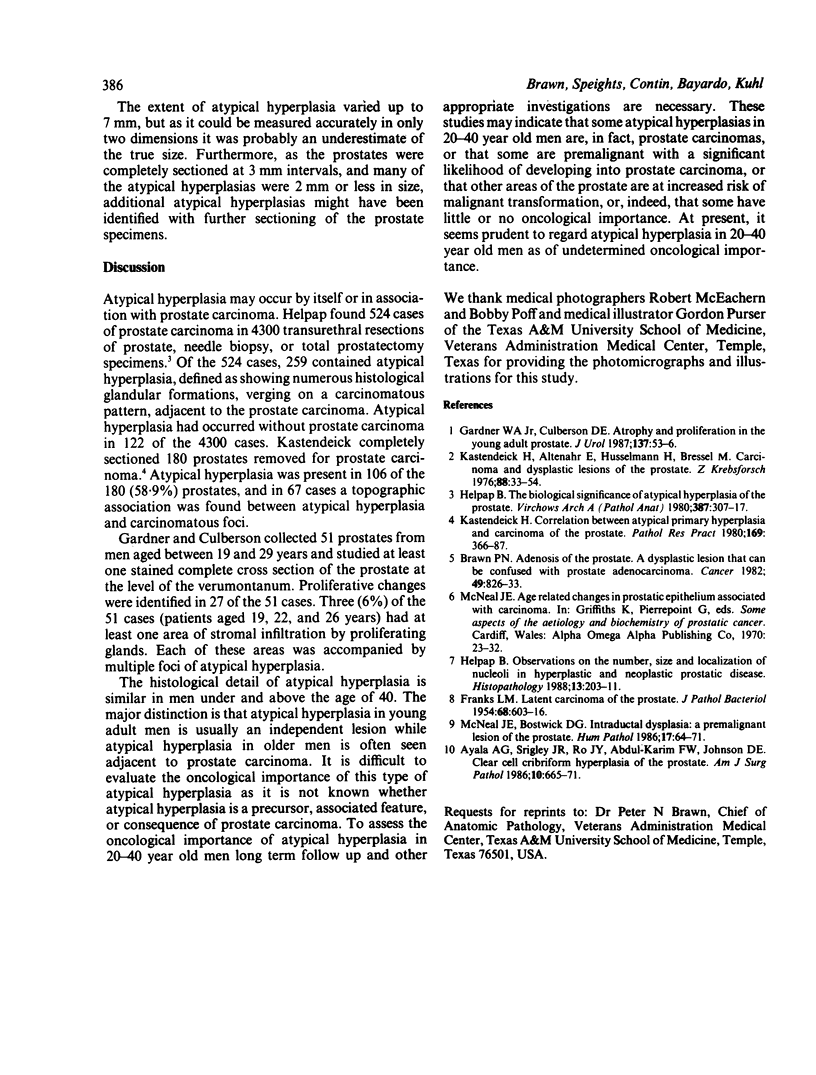
Images in this article
Selected References
These references are in PubMed. This may not be the complete list of references from this article.
- Ayala A. G., Srigley J. R., Ro J. Y., Abdul-Karim F. W., Johnson D. E. Clear cell cribriform hyperplasia of prostate. Report of 10 cases. Am J Surg Pathol. 1986 Oct;10(10):665–671. doi: 10.1097/00000478-198610000-00001. [DOI] [PubMed] [Google Scholar]
- Brawn P. N. Adenosis of the prostate: a dysplastic lesion that can be confused with prostate adenocarcinoma. Cancer. 1982 Feb 15;49(4):826–833. doi: 10.1002/1097-0142(19820215)49:4<826::aid-cncr2820490436>3.0.co;2-i. [DOI] [PubMed] [Google Scholar]
- FRANKS L. M. Latent carcinoma of the prostate. J Pathol Bacteriol. 1954 Oct;68(2):603–616. doi: 10.1002/path.1700680233. [DOI] [PubMed] [Google Scholar]
- Gardner W. A., Jr, Culberson D. E. Atrophy and proliferation in the young adult prostate. J Urol. 1987 Jan;137(1):53–56. doi: 10.1016/s0022-5347(17)43869-9. [DOI] [PubMed] [Google Scholar]
- Helpap B. Observations on the number, size and localization of nucleoli in hyperplastic and neoplastic prostatic disease. Histopathology. 1988 Aug;13(2):203–211. doi: 10.1111/j.1365-2559.1988.tb02025.x. [DOI] [PubMed] [Google Scholar]
- Helpap B. The biological significance of atypical hyperplasia of the prostate. Virchows Arch A Pathol Anat Histol. 1980;387(3):307–317. doi: 10.1007/BF00454834. [DOI] [PubMed] [Google Scholar]
- Kastendieck H., Altenähr E., Hüsselmann H., Bressel M. Carcinoma and dysplastic lesions of the prostate. A histomorphological analysis of 50 total prostatectomies by step-section technique. Z Krebsforsch Klin Onkol Cancer Res Clin Oncol. 1976 Dec 20;88(1):33–54. doi: 10.1007/BF00284745. [DOI] [PubMed] [Google Scholar]
- Kastendieck H. Correlations between atypical primary hyperplasia and carcinoma of the prostate. A histological study of 180 total prostatectomies. Pathol Res Pract. 1980 Nov;169(3-4):366–387. doi: 10.1016/S0344-0338(80)80014-8. [DOI] [PubMed] [Google Scholar]
- McNeal J. E., Bostwick D. G. Intraductal dysplasia: a premalignant lesion of the prostate. Hum Pathol. 1986 Jan;17(1):64–71. doi: 10.1016/s0046-8177(86)80156-3. [DOI] [PubMed] [Google Scholar]



